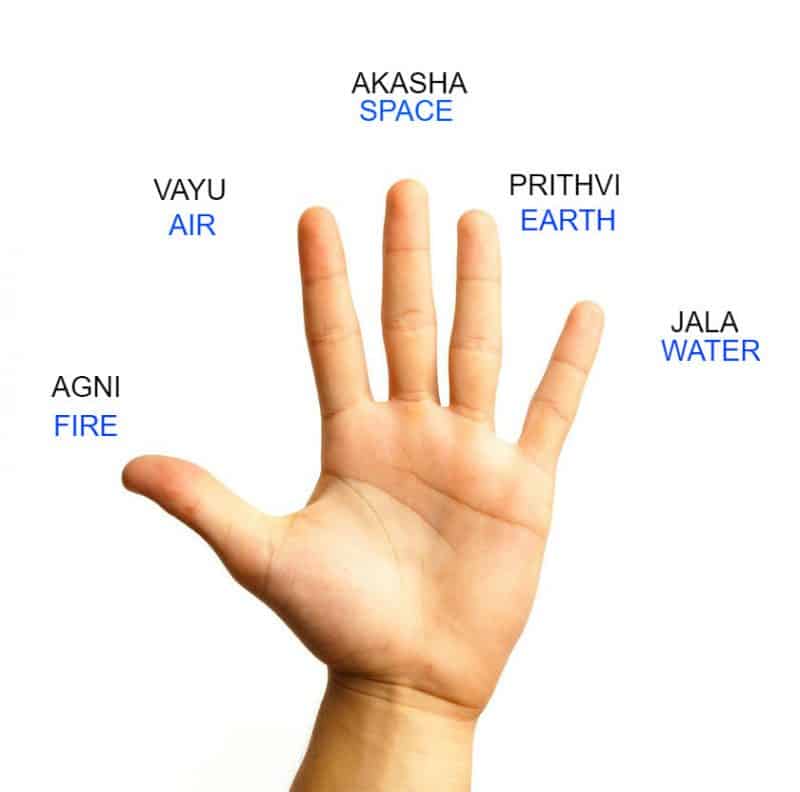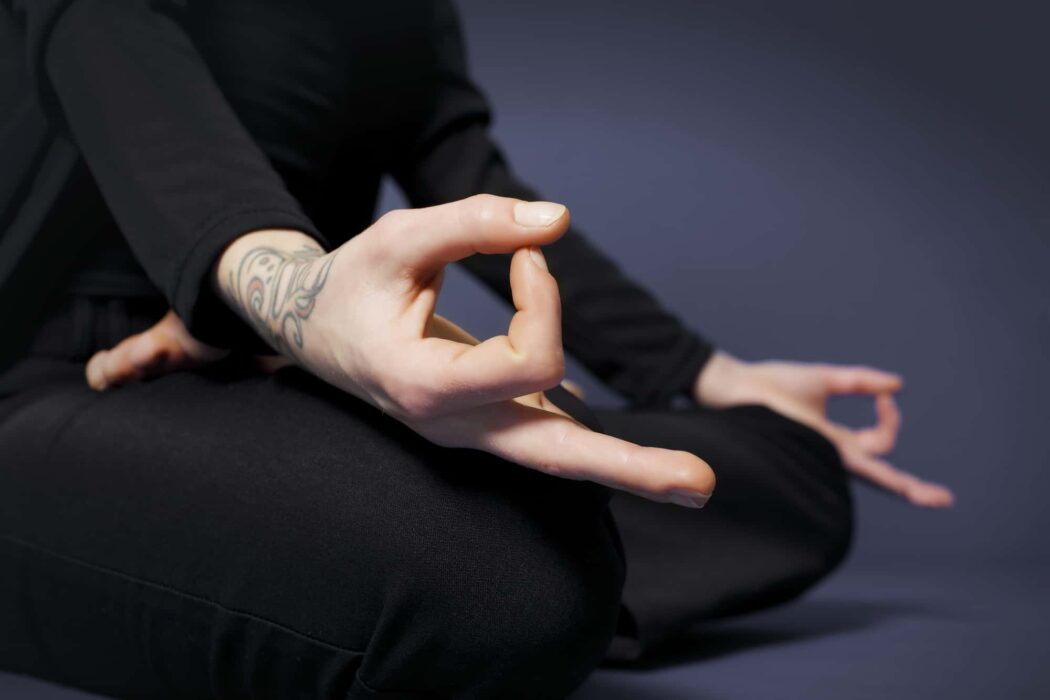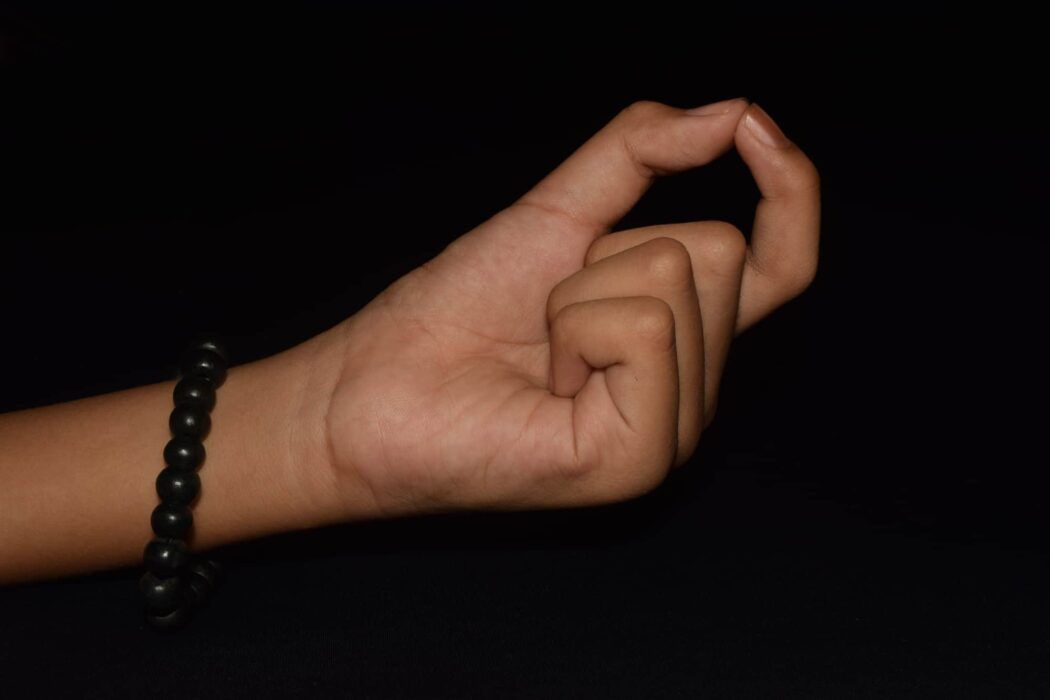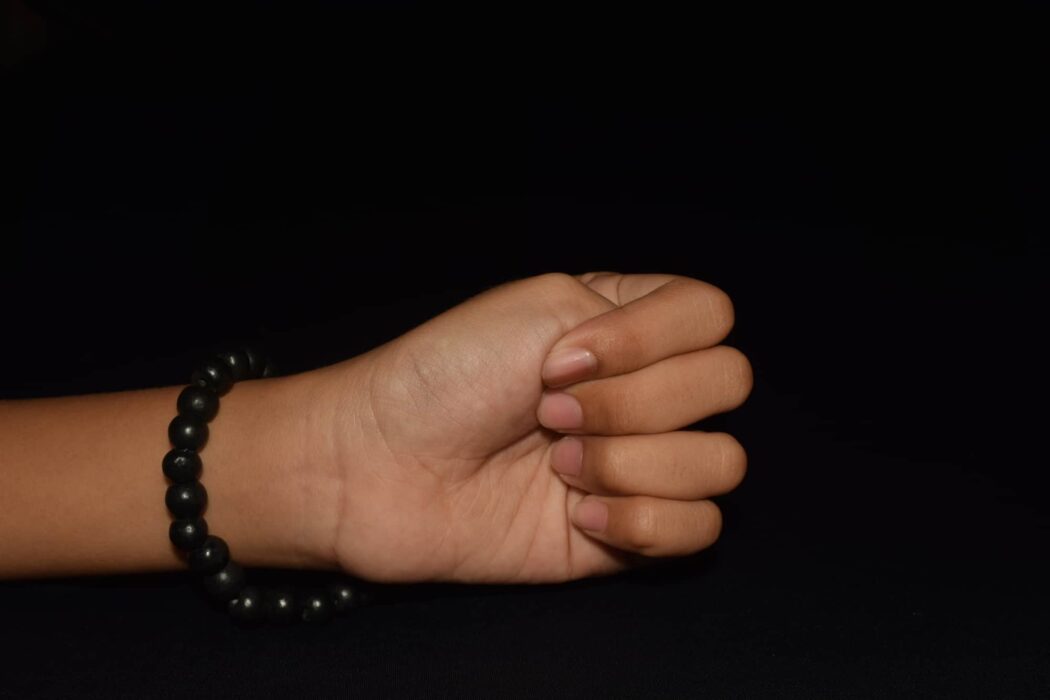Thinking of Yoga of Buddha, you’ll picture a person doing some form of a mudra. From Sanskrit, “mudra” मुद्रा (“hasta mudra”) means “hand gesture,” “mark” or “seal.” In my opinion, the word “seal” gives the best explanation of mudra practice. But let’s discuss this a bit later in this post.
Although mudra practice seems easy, it makes the yoga practice more rounded and deep, helps to concentrate, and connects you to the inner energy source (the scientists keep researching the mudra effects for now). Still, mudra practice has to be done with caution because it brings more harm than good if performed incorrectly or carelessly.
So, let’s see what mudras are in yoga and what the rules are to practice them.
A Quick Explanation of Yoga
To better understand where mudra practice stands in yoga practice, I’ll describe the yogi path shortly.
So, according to Patanjali Yoga-Sutras, yoga includes 8 elements or steps that a yogi goes through one by one. They are:
- YAMA – moral rules that a Yogi should follow
- NIYAMA – body and self-consciousness limitations and duties
- ASANA – postures
- PRANAYAMA – breathe controlling exercises
- PRATYAHARA – ability to go above the senses and control them
- DHARANA – focus and concentration
- DHYANA – meditation techniques
- SAMADHI – higher realization and enlightenment
All the above steps and recommendations allow for cleaning body and mind, calming down the brain, cleaning Nadis ( energy channels). It aids in removing blocks to make the power of life (prana or Kundalini – the name varies depending on the yoga tradition and school, but in fact, the meaning is the same) flow without restrictions. Also, one of the yoga purposes is to wake up and raise life force from the root chakra through the heart and to the higher levels.
To perform this task, Yogi can’t skip one step until the previous one is not finished.
In simple words, you can’t start doing pranayamas if you have no consistent asana practice that prepares your body for prolonged sitting. If I want to look at this from the spiritual point of view: you cant wake up and pump prana up if your channel is blocked with something. Moreover, it can be dangerous for your health and can cause delusion, heart attacks, and madness.
How do you clean your Nadis and increase the prana levels? The answer is pretty simple – you increase life energy in you by doing asanas, and you want to keep the gained force inside your body. So, this is where mudras come to help you.
What Are Mudras in Yoga?
Mudras were used as ritual gestures in ancient spiritual practices, dance performances, meditation, and ceremonies. In most cases, mudras had a sacred meaning.
In yoga, mudras are mostly known as hand gestures that seal life energy inside the practitioner.
Not all know, but mudras can be done not only with hands but with the face, tongue, whole body, mind, or the whole being of the yogi. For example, Khechari is a tongue mudra which is described as cutting the tongue tendon and constantly moving the tongue. Another non-hand mudra is Maha mudra which is a pose done with the whole body when you keep all three bandhas (Jalandhara, Uddiyana, and Mula) active.
Please note: For safety issues, these mudras should not be performed on your own or as a joke.
Based on Ayurveda, each finger relates to the primary element. In this way, the energy of each element is presented in our bodies.
- Thumb – Fire
- Index finger – Air
- Middle finger – Space
- Ring finger – Earth
- Little finger – Water

Each finger has 3 parts: lower, middle, and upper phalange. The lower part helps decrease the presence of the corresponding element in your body; the upper one – increases, and the middle one – balances the energies. Thus, mudras help regulate the levels of energy and cure and rejuvenate the body systems.
Often mudras are performed with specific pranayama for a more profound effect. In some yoga traditions, like Kundalini yoga, mudras are combined with mantra chanting and prayers.
How Many Mudras Are There?
Mudras have been vividly mentioned in Hindu and Buddhist scriptures. According to the scriptures, a total number of 399 mudras are mentioned. They can be classified by the level of difficulty: some are available for beginners, while others require specific preparation to do them. Mudras can be combined in a set or practiced along with asana and pranayama.
Sometimes mudras are divided into 5 categories:
- Yogic: 25 mudras to be included in a daily yoga practice
- Spiritual: helps achieve spiritual goals, bring focus and concentration. For example, Gyan Mudra.
- Curative: are used to treat health issues. For instance, Apana mudra.
- Religious: are used in ceremonies and religious happenings.
- Customary: used for self-oriented purposes (Pranayam mudra).
Below are five basic mudras that beginners can use. They are:
Chin Mudra

Here the thumb and the index finger are sealed at the tips while the palm and the remaining three fingers are stretched forward. The hands are rested on the thigh. This mudra is performed at the time of meditation and while practicing pranayama such as Nadi Shuddhi, Bhastrika, Ujjayi, etc. Mudras are also performed during some of the kriyas such as Kapalbhati.
Chin Mudra is believed to increase energy flow in the body, thereby enhancing the power of concentration.
Chinmaya Mudra

For this mudra, the tip of the thumb and the index finger are sealed together to form a ring. The rest of the fingers are also folded inwards. The hands are rested on the thigh with the palm facing upwards.
This mudra is performed to aid digestion.
Adi Mudra

The thumb is folded to touch the base of the little finger and the remaining four fingers are folded to cover the thumb to make a loose fist. The palms face upwards as the hands are rested on the thigh.
This mudra helps to soothe the nerves, increases oxygen flow throughout the body, enhances lung capacity, and also helps to get rid of snoring.
Bramha Mudra

Bring your palms to Adi Mudra. Join both your hands together so that the knuckles join together. Place your joined fists under your navel.
Performed while practicing Pranayama, Bramha Mudra is believed to detoxify the body and mind while increasing the energy flow within the body.
How Long to Hold Mudras?
According to the ancient books on Yoga and the norms handed down by the early practitioners and masters of Yoga, the duration for holding each mudra has been prescribed. The optimal duration of mura practice is 15-20 minutes ( some sources suggest that 24 minutes is the best time frame).
In mudra practice, you should keep your back and spine straight. Keep this pose as long as you hold the chosen mudra. So for a beginner 15 minutes may seem too long, as the back muscles are not ready and legs are stiff. So, you may get in a situation when your back is slowly rounding, and knees begin to ache, and you finish your mudra practice in a shriveled pose. This is not a good idea, as the round back won’t allow energy to flow through the spinal channel.
To fix this, start mudra practice with 3-5 minutes and increase to 15-20 minutes. With time, you’ll be able to stay in stillness for more extended periods with no pain.
What Are Mudras Used For?
Mudra might look very easy on the face of it. But when you perform them, you will realize that after all, it is not so easy to keep your fingers sealed together in a particular way for a long time. It helps you to realize the limitations of your body and mind.
Experienced practitioners advise not to give up. Just like you don’t give up on a complex asana, you need to work on retaining a particular mudra for an extended duration or as it is required while performing an asana, pranayama, or kriya.
Mudras help to accentuate the benefits of the other Yogic activities. It helps to imbibe positivity in our bodies and minds. It facilitates a better energy flow and oxygen circulation in every part of our body that helps our organs heal, revive and rejuvenate, thus performing to their optimum capacities.
When to Do Mudras?
Mudras are primarily practiced while performing other activities of yoga that include – asanas, pranayamas, and bandhas. Specific mudras are practiced while performing certain rituals and pranic healing.
The recommended time for mudra practice is early morning: 4-6 AM.
Why Yoga Breathing Is Important?
Before doing the practice, gurus offer to clean your body and wash your hands.
Do Mudras Have Side Effects?
The answer is Yes. Mudras have side effects if done too early in your practice. That’s is why it’s essential to have an experienced instructor or guru who can guide you.
Among the side effects can be:
- dizziness
- bloating
- delusion
- sudden increase of heart rate
- sweating
- shaking and more.
If you come across some of the above, please stop performing mudra right away. Instead, take several breaths, ground your body on the mat ( put palms and soles on the floor, open your eyes, and concentrate on the surrounding space). Be attentive to your body signals and ask for help if necessary.
To Sum Up
The above information is only a short resume of an exciting journey that you can have with mudra practice. There is much more to discover within your body. We know many things, and much more we can’t understand only with our brain. Some things we can only experience.
So, why not start doing some mudra practice and get your own vision of it today?